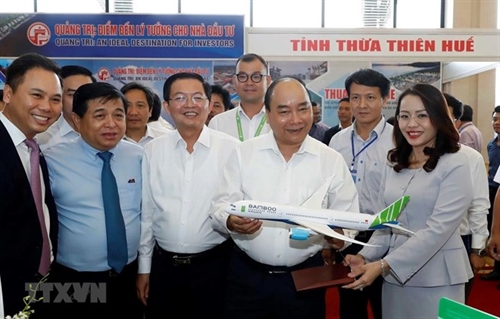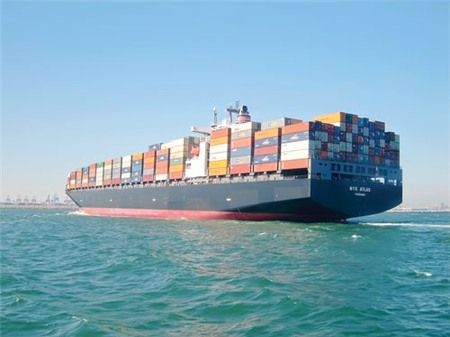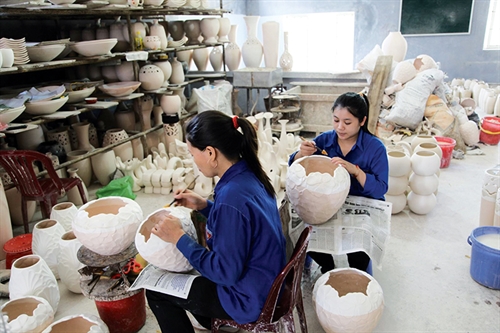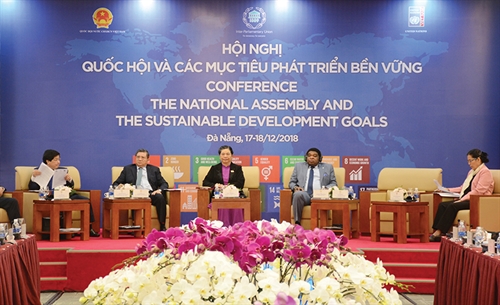The central key economic region should strive to become a driving force of the central region and be an important gateway to the sea of the Central Highlands and the East-West corridor, Prime Minister Nguyen Xuan Phuc said at a conference held in Binh Dinh province on August 20.
The PM asked the central provinces to adjust their policies on forest and marine economic development for the sake of the whole central region.
He noted that the economic development of the region is not the separate task of the 14 central localities but of ministries and departments.
He asked them to focus on building major plans, especially solutions which could be deployed now or in 2020.
The central region stretching from Thanh Hoa to Binh Thuan includes 14 cities and provinces.
With a coastline of 1,900km, the region holds a lot of advantages for marine economic development.
It is home to nine airports, including five international ones, 14 seaports, and 11 of the 17 nationwide coastal economic zones.
The sea in the central region holds a particularly important position in the development of the marine economy.
The region has great potential to develop heavy industry, oil and gas, sea transport, logistics, sea and island tourism, fishing, aquaculture, wind and solar energy.
It is also an important bridge of Central Highlands localities in integration through connecting with the East-West economic corridor.
Meanwhile, the central key economic region consists of Thua Thien Hue, Da Nang, Quang Nam, Quang Ngai and Binh Dinh. It accounts for 8.4 percent of Vietnam’s total area and has the total population of 6.5 million, making up 7 percent.
According to Minister of Planning and Investment Nguyen Chi Dung, the central region has reaped significant outcomes over the past 30 years of reform, especially in 2016-2018 and in the second quarter of 2019.
The economy thrived in all 14 provinces with annual average gross regional domestic product (GRDP) of about 7.62 percent.
The contribution of the region to Vietnam’s overall growth increased to 19.28 percent in 2018 from 18.83 percent in 2016.
Some provinces that were previously in difficult situations have achieved good growth in 2018 such as Quang Binh (7.03 percent), Quang Tri (7.12 percent), Phu Yen (6.88 percent), Ninh Thuan (8.03 percent) and Binh Thuan (8.08 percent).
The region’s annual per capita GRDP increased from 1,850 USD in 2016 to 2,074 USD in 2018.
The economic structure shifted to services and industry. The industry-construction sector posted the highest growth at an average 10.36 percent per year thanks to key industrial projects such as oil and gas, steel making, automobile assembly and mechanical engineering.
The minister said the business environment in the region has improved.
Environmental protection, science-technology development, employment, healthcare, education-training and poverty reduction have received great attention from the region.
The region has also associated socio-economic development with enhancing defence, security, and safeguarding national sea and marine sovereignty.
Besides these achievements, the region should strive to remove some bottlenecks such as modest economic scale and weak momentum of economic growth.
Among the 14 provinces, only Thanh Hoa, Ha Tinh, Quang Ngai and Quang Nam have large-scale investment projects. The remainder see low growth and have yet to fully tap their available seaports and airports.
The conference aims to map out strategic and effective solutions to help the central region boost rapid and sustainable development, he added.- (VNA/VLLF)
The PM asked the central provinces to adjust their policies on forest and marine economic development for the sake of the whole central region.
He noted that the economic development of the region is not the separate task of the 14 central localities but of ministries and departments.
 |
| Prime Minister Nguyen Xuan Phuc visits booths set up within the conference__Photo: VNA |
He asked them to focus on building major plans, especially solutions which could be deployed now or in 2020.
The central region stretching from Thanh Hoa to Binh Thuan includes 14 cities and provinces.
With a coastline of 1,900km, the region holds a lot of advantages for marine economic development.
It is home to nine airports, including five international ones, 14 seaports, and 11 of the 17 nationwide coastal economic zones.
The sea in the central region holds a particularly important position in the development of the marine economy.
The region has great potential to develop heavy industry, oil and gas, sea transport, logistics, sea and island tourism, fishing, aquaculture, wind and solar energy.
It is also an important bridge of Central Highlands localities in integration through connecting with the East-West economic corridor.
Meanwhile, the central key economic region consists of Thua Thien Hue, Da Nang, Quang Nam, Quang Ngai and Binh Dinh. It accounts for 8.4 percent of Vietnam’s total area and has the total population of 6.5 million, making up 7 percent.
According to Minister of Planning and Investment Nguyen Chi Dung, the central region has reaped significant outcomes over the past 30 years of reform, especially in 2016-2018 and in the second quarter of 2019.
The economy thrived in all 14 provinces with annual average gross regional domestic product (GRDP) of about 7.62 percent.
The contribution of the region to Vietnam’s overall growth increased to 19.28 percent in 2018 from 18.83 percent in 2016.
Some provinces that were previously in difficult situations have achieved good growth in 2018 such as Quang Binh (7.03 percent), Quang Tri (7.12 percent), Phu Yen (6.88 percent), Ninh Thuan (8.03 percent) and Binh Thuan (8.08 percent).
The region’s annual per capita GRDP increased from 1,850 USD in 2016 to 2,074 USD in 2018.
The economic structure shifted to services and industry. The industry-construction sector posted the highest growth at an average 10.36 percent per year thanks to key industrial projects such as oil and gas, steel making, automobile assembly and mechanical engineering.
The minister said the business environment in the region has improved.
Environmental protection, science-technology development, employment, healthcare, education-training and poverty reduction have received great attention from the region.
The region has also associated socio-economic development with enhancing defence, security, and safeguarding national sea and marine sovereignty.
Besides these achievements, the region should strive to remove some bottlenecks such as modest economic scale and weak momentum of economic growth.
Among the 14 provinces, only Thanh Hoa, Ha Tinh, Quang Ngai and Quang Nam have large-scale investment projects. The remainder see low growth and have yet to fully tap their available seaports and airports.
The conference aims to map out strategic and effective solutions to help the central region boost rapid and sustainable development, he added.- (VNA/VLLF)









